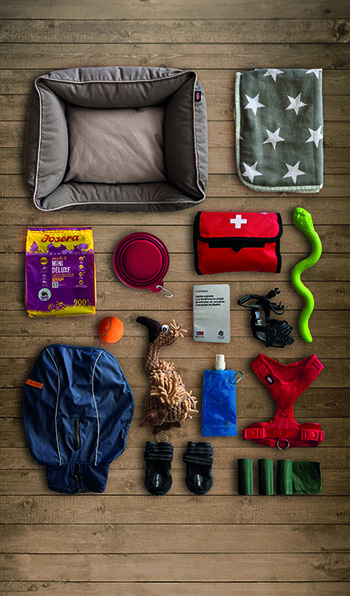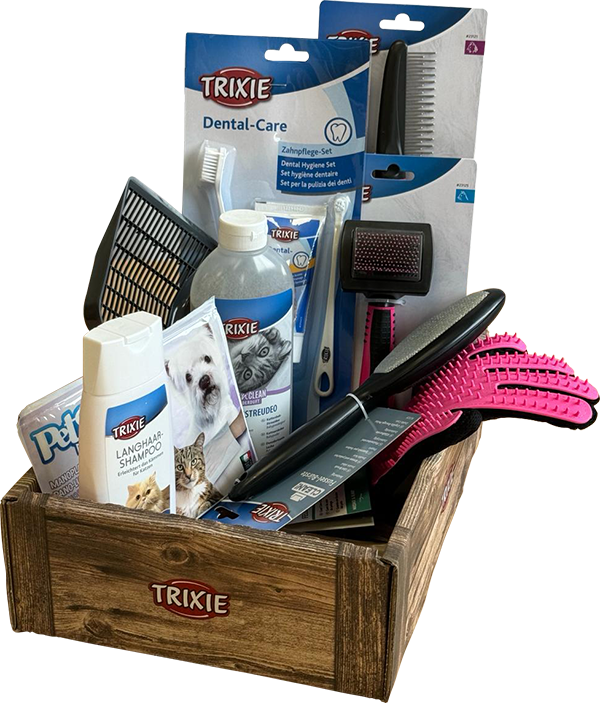Travelling always involves a change of habits. We change our routines to go on holiday or for work. And our habits include our pets, who are affected by our rhythms. Therefore, in this chapter, we will focus on this challenge we face together with our pets in order to support them to "unlearning healthy habits and "learn". others temporarily, until our journey is over and we return home.
Our pets will always have to experience it that way: unlearning habits in order to learn new ones temporarily; and returning to the same process when they return home. Therefore, it will be interesting to assess in which cases it is actually It is worthwhile to put our partner through this process, as it may only put them through unnecessary stress. We approach this chapter from the point of view of how to deal with these learnings and unlearnings for the well-being of our pet in each of the areas of his health:
Improving emotional and social bonding
Outside their environment and in spaces where they are likely to be under stress, your presence will be even more relevant than usual and the emotional bond you maintain will be more decisive than ever. Offer your pet security during the time he is away from his shelter through constant attention and an empathetic attitude.
Physical exercise
New routines should continue to keep your pet at an optimal level of exercise that is appropriate for their wellbeing. Therefore, we must continue to maintain at least the same amount of exercise time so that their physical health and general well-being is not altered, helping your pet to maintain a healthy weight.
Promoting mental development
When travelling, visual, olfactory or auditory stimuli vary constantly. Depending on how we support them in dealing with these situations, they will either generate stress or the habit we are looking for: helping your pet to stay mentally more stimulated.
Reinforce obedience in times of stress.
The stimuli of a journey, especially a long one, can lead to new stress for our pets. And the more you have worked with them on obedience, the more useful it will be for both of you in these situations. The aim is to prevent these exceptional periods from disrupting the rest of the healthy habits already acquired in other aspects of their routine.
To socially habituate the pet to new environments:
Getting away from home will always involve the challenge of exercising the social development of our pets. Certainly with others of their species but, above all, with people, as we have more time on holiday, so we are with them more, which is a fundamental change in their routines. Visits from strangers or spending more time with children or other family members are also routines that tend to increase during holiday periods and which greatly affect our pet's social environment.
How to properly prepare the journey for my...
Proper preparation of the dog
Gradually accustoming our dog to new means of transport and travel accessories is the key to being able to leave with peace of mind every time we have to spend a few days away from home. The time invested in slowly accustoming the animal to new situations pays off with a relaxed journey for both people and pets.
Whether it is a carrier or a carrier bag or rucksack, new items should always be associated with a positive experience. In order for the dog to get used to them, it is recommended to place them in a familiar place and familiarise the pet with the new item. During the education process, actions such as getting in and out of the transport item, going over a ramp or wearing a muzzle should be rewarded.
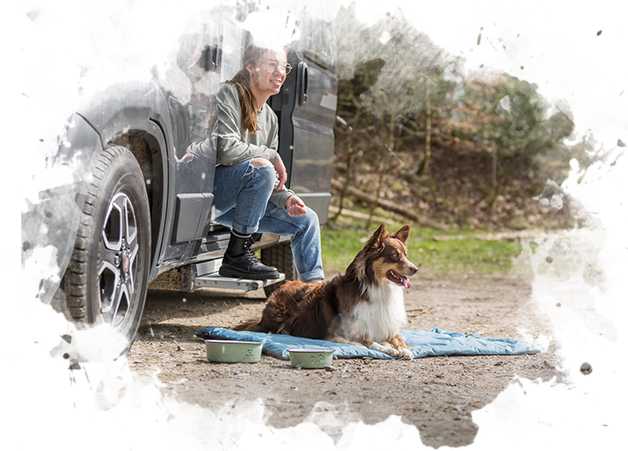
When the dog travels with us.
Whether it's a trip to the beach, a weekend break or a longer holiday, anyone travelling with their dog should consider everything from safety and food to official regulations on public transport or abroad. Travel arrangements should be made just as carefully as those for people.
This is particularly important if you are travelling internationally, as you should check less mundane aspects of day-to-day life such as any identification of the dog, perhaps proof of certain vaccinations, or the rules of coexistence at your destination.
Preparation: packing your suitcase.
Some items are essential whether we decide to take them with us or have them looked after by other people on our holiday. Our friend's documentation is the first and last item we should check that we take with us. We never know what unforeseen events may arise or what unexpected needs may be requested of us (the use of a muzzle, for example), so it will always be necessary to have the vaccination record in order. For the same health needs, the first aid kit will be a very useful item in case of small unexpected situations.
At the holiday destination, items that keep the dogs' scent at home will come in really handy, as we will see below. So they will be happy for their favourite blanket or soft toys, as well as their own resting place. By keeping their scent, they will be familiar and easy to recognise in new surroundings. The same will happen even more decisively in their usual food and water bowl, as these will be days when feeding routines will be even more important than usual.
It is always very important to put an identifier on animals, but especially when they are not in their usual environment. The most secure and unique identifier is a microchip. However, it will be more effective and quicker to find the dog if it has your telephone number on an identification tag attached to its collar. More than 80% of dogs are recovered in less than 24 hours if we identify them with it.
By Car
As we have been advocating in this guide, before deciding on any new habitat, we must know the characteristics of our pet. For car journeys, it is essential when deciding on the two main aspects: what restraint and safety elements to provide and where to place them in the vehicle.
This is usually done by using a car harness that is attached to the seat belt or in a carrier or cage. Especially on longer journeys, it is important to get the animal used to the new situation beforehand.
The first step is to get your dog used to the carrier. The carrier should be set up with the door open so that the dog can decide for himself whether he wants to go in and how long he wants to stay there. Give your pet his treat or even his daily food ration in the carrier so that he will positively bond to the space. When the dog enters the kennel voluntarily without any problems, you can close the door for a short time and then at longer and longer intervals.
Choose the right kennel for every use. The high-quality, aluminium-framed carriers are safe and quiet. Their wide, fi ltered louvres allow good air circulation. Other kennels have removable varieties and specific materials. A durable polyester carrier with very stable metal frames. Easy to assemble and disassemble and ideal for exhibitions, for example.
A carrier is not an item to leave your dog in for several hours a day. We cannot spend our holidays with our dog in a carrier in the hotel room. Always make sure that your dog has enough water available when using it.
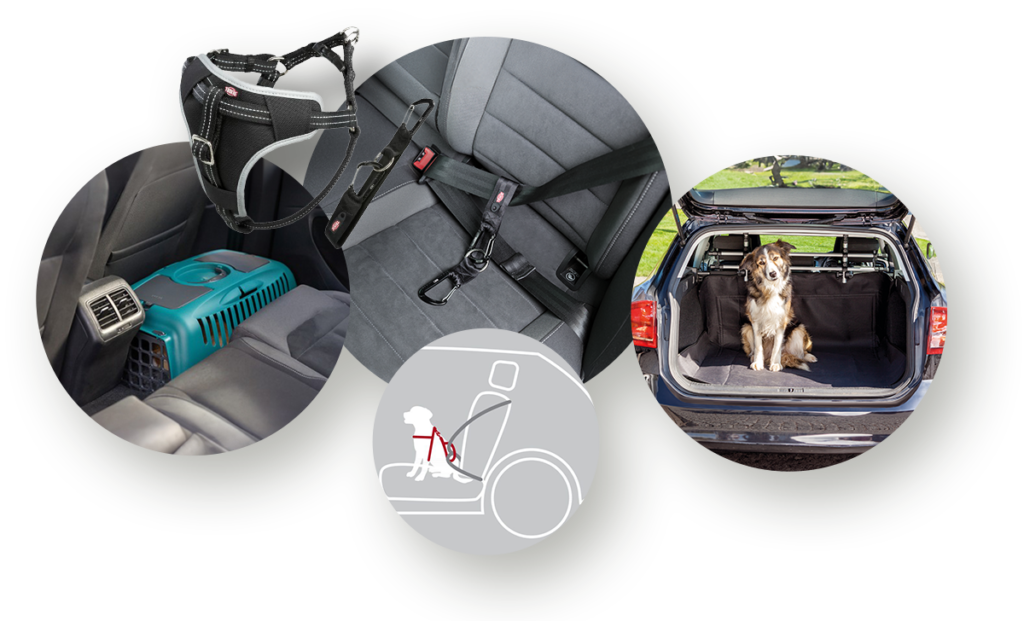
By Train or Plane
Generally, train or plane journeys will take much longer than what our dog is used to. This is the main aspect that makes it different from the habits already acquired by our pet. Therefore, the decisions made before the journey will be crucial to ensure that the trip is pleasant for both person and dog.
The choice of carrier or transport bag is the most important decision that will determine the entire journey. It is very likely that the carrier we use for short journeys, such as visits to the vet, will not be suitable for this type of journey. Travel bags will be the choice that will help us to have a pleasant journey, in those cases where the characteristics of our dog fit with the regulations of the airline or train company for our dog to travel in the cabin. Our purpose with the bag will be to support our pet through positive stimuli during the journey that will help him to be calm. To do this, it is advisable for the bag to have easy access slots or mesh mesh where our dog can see or smell us, and even the ability to expand the interior space to make the journey more comfortable.
In cases where dogs have larger characteristics that make it compulsory for them to travel separately from us (in the hold of the aircraft, for example), the safety and robustness of the carrier are as important or even more important than its size. Although you should always consult the airlines' regulations, the IATA establishes internationally standardised characteristics for the carriers that travel in the hold and which, of course, would be the minimum required for the brands of carrier that we purchase for our dog.
- The pet must be able to stand upright in its natural position, turn around and lie down.
- It should be leak-proof (e.g. with hygienic pads) or waterproof.
- The interior must not contain sharp corners, edges or nails.
- Must be leak-proof (top and bottom parts bolted together; door locked to prevent leakage).
- It should not have wheels; these should be removed if necessary.
- Feeders and drinkers should be integrated.
- There must be ventilation holes on three sides.
- Must carry a "Live Animals" sticker.
In the hotel or new flat
Your eating habits: en route and at your destination
The movement involved in travelling with your pet involves changes in its body and behaviour that must be taken into account when it comes to feeding and watering it. For example, your dog should not be deprived of water during major stops on car journeys. However, it may be detrimental to feed him on the usual rations and at the usual times as the movements of the car may make him dizzy and affect his digestion processes.
When the dog stays in another home.
Before starting our holidays, we remember that the dog is well. Our pet is in healthy and balanced habits for its daily wellbeing. Therefore, our trip will inevitably alter some of the routines that the dog loves. We must assume this in an integrated way when making the decision for the dog to spend these days away.
In order to break those routines he loves, the dog will go through a process of "unlearning" some habits in order to learn others. This will always happen, whether he comes with us or not, as any aspect of the environment will change and affect his habits (for example, if we go on holiday to a beach resort, the weather will be different, the animals he encounters on his walk...). If we decide that it should be with people other than ourselves, it will be a little more complicated. For this reason, the process of accompaniment should be done with more time when we travel without our dog and leave him in the care of other carers.
Furthermore, depending on the length of our trip or holiday period, the dog may become accustomed to the new routines of his kennel or family home. So he will have to "unlearn" the holiday habits and "relearn" the ones he had at home.
Therefore, as guardians of our dog, it is desirable for the health and well-being of our pet that we alter all these processes as little as possible. Both in terms of the spaces he has to get used to and the people who guide him.
If the option is to leave you with someone, the main options are:
- Dog kennels: watch their diet and behaviour
- With our acquaintances
The cat is probably the pet that most loves routine and that its habits always remain the same. As we have been analysing throughout the Guide, territory control and stability in the colony are essential for a cat's stability. For this reason, we are going to review a situation that is as common among all cat lovers as it is potentially uncomfortable for them: the arrival of a new cat at home.
The process has to be very slow precisely because of their territorial nature and sensitivity to change. Make sure that each cat has its own space, separate from the others, with a bed, food bowls, drinkers and a litter tray. This helps to reduce competition and stress.
When he is adapted to this space, the other cats should be separated to their own room and the whole space should be opened to the new cat so that he can discover the different areas of the house, smelling everything and leaving his scent.
In this way, the other cats, without seeing him, will get used to hearing and smelling him.
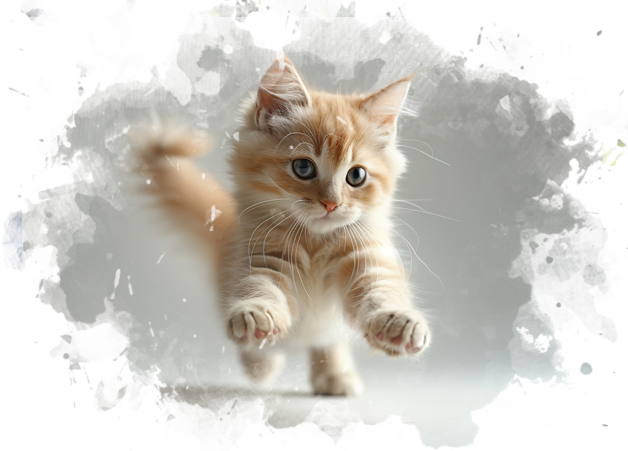
Later, it is appropriate for them to see each other through a glass without direct contact. As they see each other, without forcing them into contact, positive reinforcement should be attempted, with reward snacks being particularly useful at this time. In these cases, the use of feline facial pheromone synthetics also helps because it reduces stress in these circumstances.
As stress-free behaviour is visualised, barriers can be removed, always allowing any cat access to their safe zone when they wish to do so. Spend individual, quality time with each cat to strengthen your bond with them and ensure that none of them feel neglected.
If there are several cats, it is advisable to start the introduction with the one that has the best character and tolerates change the best. Avoid scolding and touching, unless strictly necessary.
And although all of the above will certainly help you in the process, the most important thing of all is patience. Empathise with them because they don't like change at all.
